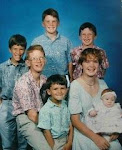We walked to a nearby field and ,before hand launching, I tested the controls. No servos. Good thing I didn't just pin the throttle and toss it! I opened the wing to find the receiver pushed to the front of the battery compartment, both servo wires pulled from their plugs. It seems on a nose crash, the unsecured receiver has some room to move. I plugged the servo wires back in, tested the connections, and re-installed the wing. Confident on my repairs, I pinned the throttle and launched the plane. Another successful ten seconds, up until the plane veered left and plummeted into the ground. Hmmmm, no right rudder. Upon re inspection, I noticed the control arm for the rudder had an s-curve, plenty of tension for a left rudder, but on pushing for right, it just bent between my the wire guides. I moved the wire stays a few notches out, provided more leverage, less push on the control arm and decided, against better judgement that I wanted one more try to fly it.
Hesitatingly, I spun up the throttle, prepared to launch, and one second before throwing it, the propeller spun off its shaft and flew into the air like a bumble-bee. It spun up about 20 feet, turned and headed for the ground, all the while, buzzing through its revolutions. I was still holding my plane in launch position when the propeller hit the ground. That was sign enough that it was time to call it a day and make some much needed adjustments. Plane One will fly. For how long, is to be determined.

No comments:
Post a Comment